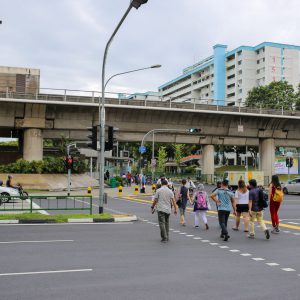How much do users value a network expansion? Evidence from the public transit system in Singapore
November 7, 2022

The Mass Rapid Transit (MRT) line first began operating on 7 November 1987 with five stations along the North-South line. It has since expanded to more than 130 stations that span across the island, with a daily ridership of over 3 million. It is undoubtedly the preferred public transport option for many due to its accessibility, connectivity, and economical fares.
In ‘How much do users value a network expansion? Evidence from the public transit system in Singapore’ (Regional Science and Urban Economics, 2018), Senior Lecturer Eric Fesselmeyer and Associate Professor Liu Haoming (both from NUS Economics) measured the impact on housing prices arising from the expansion of the North-East MRT line in 2003. Previous studies had examined the changes in house prices from homes which were located near to the newly constructed stations. For a different approach, the authors chose to focus on the prices of pre-connected houses – those already connected to the North-East MRT network prior to its expansion. Houses along the North-East line were studied as the line experienced a major expansion of 14 new stations and a 20% increase in rail length. Furthermore, all stations opened in the same month, and there were no major additions to the line within five and half years from the 2003 extension. As government subsidies for Build-to Order (BTO) flats and the opening of new amenities (more likely in non-mature estates) may play a role in affecting house prices, only the transaction prices of HDB resale flats in mature estates before and after the expansion were collected from data.gov.sg.
They found that the North-East line expansion increased the prices of pre-connected houses by 1.5%-2.0%, demonstrating favourable economic returns to scale. The expansion increased the value of these houses by at least $455 million, proportionate to 9% of the estimated $5 billion expansion cost of the North-East line expansion. This suggests that the value of network expansion is considerable when compared to the cost of in-network construction.
Dr Fesselmeyer and A/P Liu propose that future cost-benefit studies on network expansion and its impact on housing prices should also include houses that were already connected to the network prior to its development to prevent an underestimation of the total benefits obtained from a network expansion.
Read the full article here.
